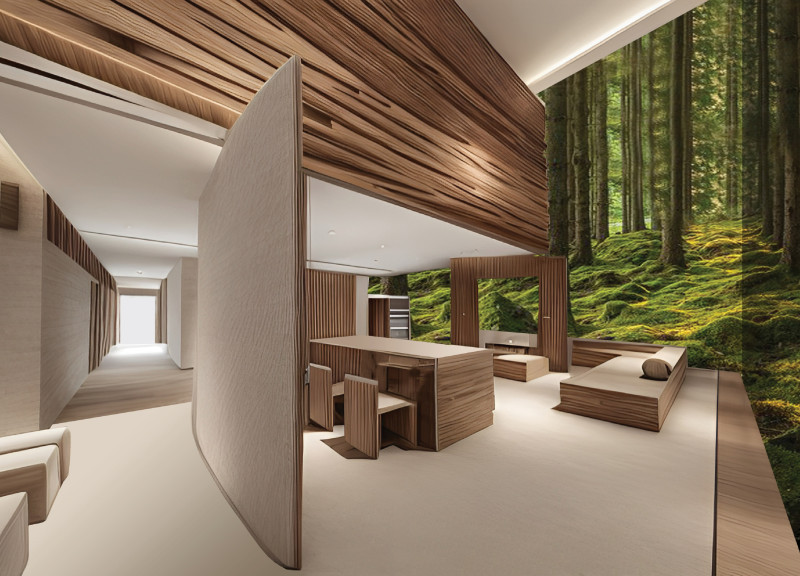5 key facts about this project
At its core, the project champions sustainability while emphasizing the relationship between space and its users. The design functions as a multi-purpose facility, accommodating various community activities that encourage social interaction and engagement. By prioritizing human experience, the architecture fosters an environment conducive to collaboration and creativity. Spaces are meticulously planned to support diverse functions, facilitating everything from quiet contemplation to lively gatherings.
The materiality of the design is particularly significant, showcasing a selection of locally sourced materials that enhance its contextual relevance. Elements such as natural stone, timber, and glass feature prominently throughout the project. The use of natural stone not only provides durability but also connects the structure to the geological narrative of the region. Timber, incorporated in various forms—from structural components to interior finishes—adds warmth and tactile appeal, inviting users to engage with the space on a sensory level. Large expanses of glass are strategically positioned to maximize natural light, blurring the boundaries between indoor and outdoor realms while promoting energy efficiency.
Unique design approaches are evident in the roof structure, characterized by its innovative use of sloping angles that naturally channel rainwater. This feature not only enhances the building's sustainability by reducing runoff but also adds an aesthetic layer that aligns with the surrounding topography. The roof design is a pivotal element, as it aligns with the overarching vision of intertwining functionality with artistry. The incorporation of green roofs or living walls may also be notable, providing additional ecological benefits and contributing to the overall biodiversity of the area.
Landscaping plays an integral role in this architectural project, carefully designed to complement the structure and enhance the public realm. Native plant species are utilized to promote local biodiversity while requiring minimal maintenance. Pathways and communal spaces are crafted to encourage movement and exploration, fostering a deeper connection between users and the landscape. Outdoor seating arrangements, positioned to take advantage of natural vistas, create inviting spaces for social interaction.
The floor plans and spatial organization highlight a clear navigational path, facilitating movement throughout the structure. The careful arrangement of rooms and communal areas invites a flow of activity that is both intuitive and engaging. Architectural sections reveal the duality of open and intimate spaces, effectively balancing privacy with community. The design takes into consideration not only the visual impact but also the acoustic qualities of each space, ensuring a comfortable environment for all users.
In exploring architectural plans and sections, one can appreciate the meticulous thought that informs every aspect of this project, from site orientation to space allocation. Each design decision has been made with a clear understanding of both its immediate and broader context. This comprehensive approach to architecture promotes an environment that is not only functional but also deeply connected to the community it serves.
For those interested in delving deeper into the architectural ideas and nuances that define this project, a review of the architectural designs will provide valuable insights. Exploring the detailed plans and sections will further illuminate the careful considerations that make this project a noteworthy example of contemporary architecture.


 Boran Hrelja
Boran Hrelja 























